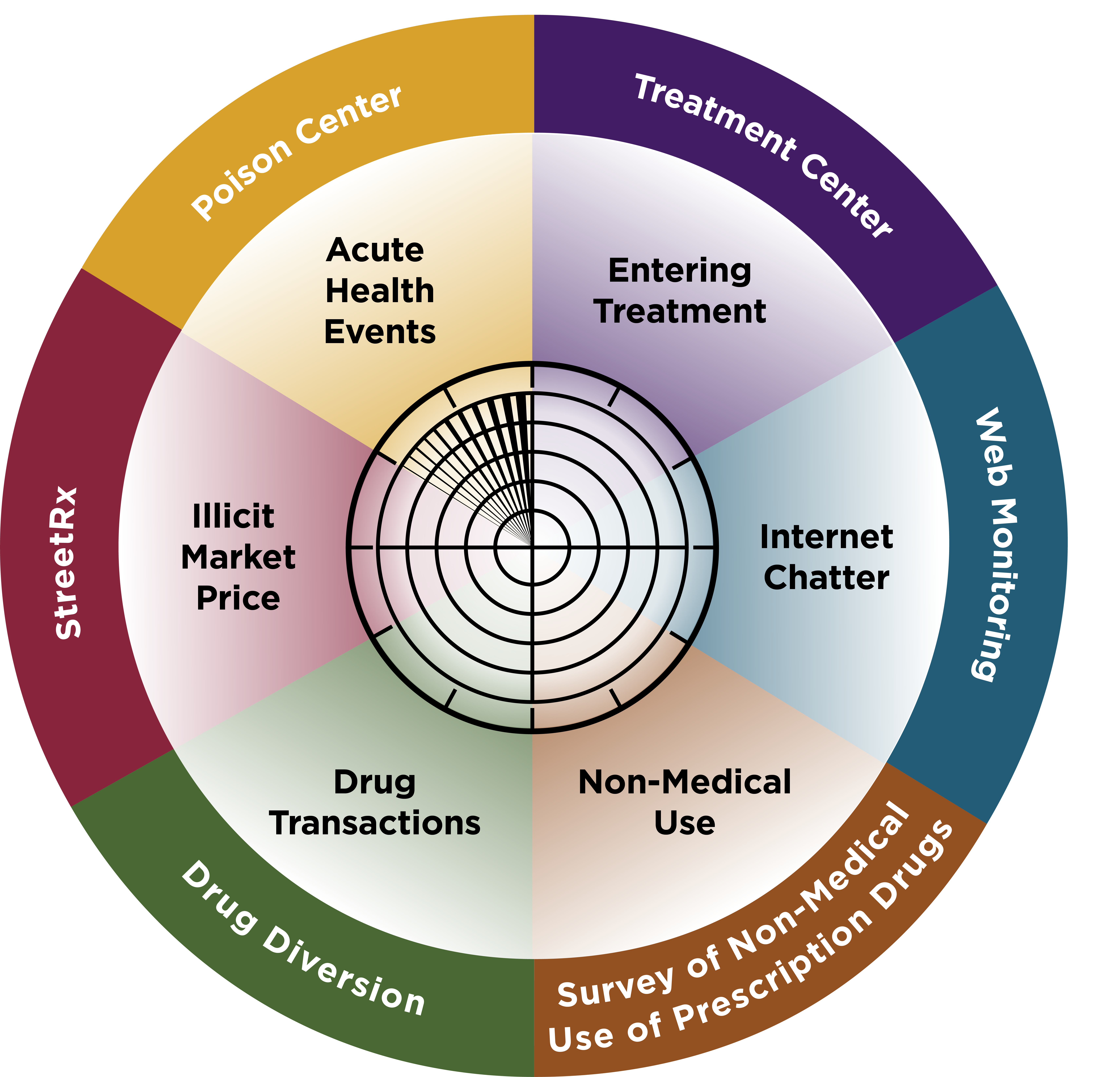The RADARS System utilizes a mosaic strategy to monitor abuse, misuse and diversion across all phases of the drug abuse pathway.

Data from all programs are triangulated to provide a comprehensive picture of prescription drug abuse, misuse, and diversion.
Triangulation is an approach used in many fields of research and is especially useful in the study of hard to reach or hidden populations, such as prescription drug abusers. It is not typically possible to create sampling frames for such populations, so standard sampling methods cannot be implemented. Instead, researchers often rely on multiple convenience samples, each obtained from a different perspective on the hidden population being studied. No single data source is expected to provide complete and representative information about the group but, when considered together, multiple data sources strengthen the credibility of findings, reduce the risk of false interpretations, and provide a more complete and comprehensive perspective on the behaviors of the covert group.
The RADARS System is composed of a mosaic of programs which target diverse populations throughout the US and abroad. The programs collect product-specific and geographic-specific information, allowing for early and ongoing monitoring of newly approved drugs as well as those already on the market.
